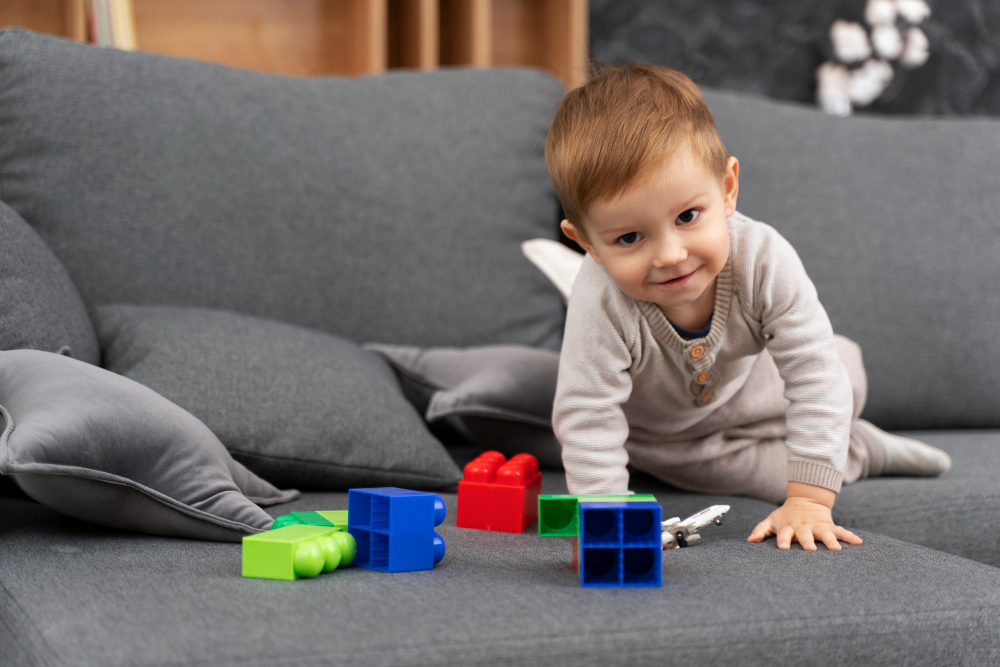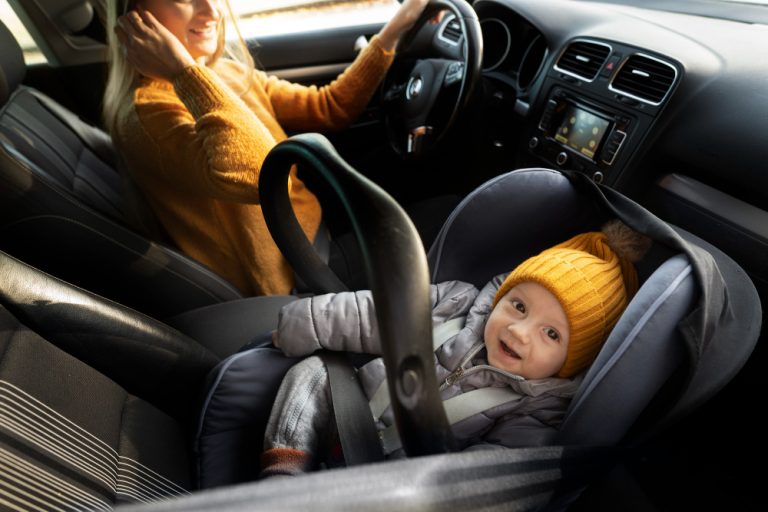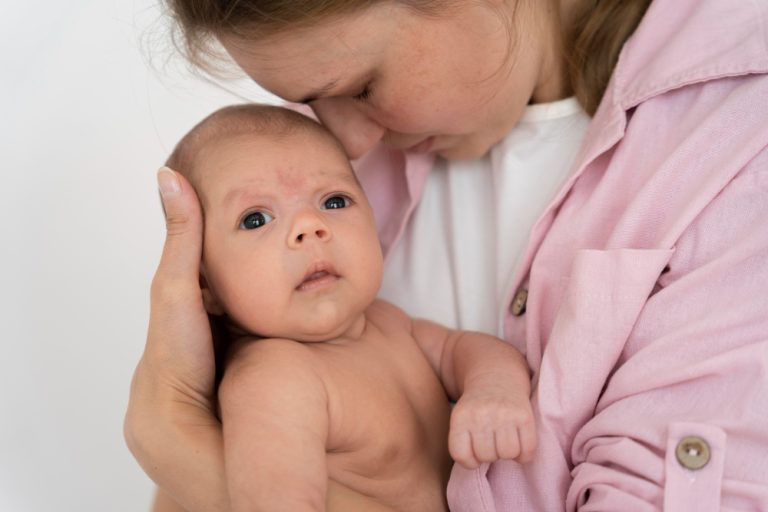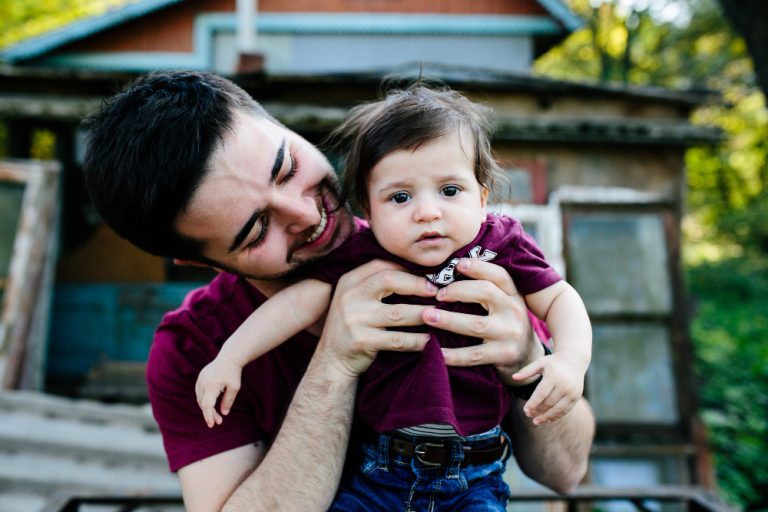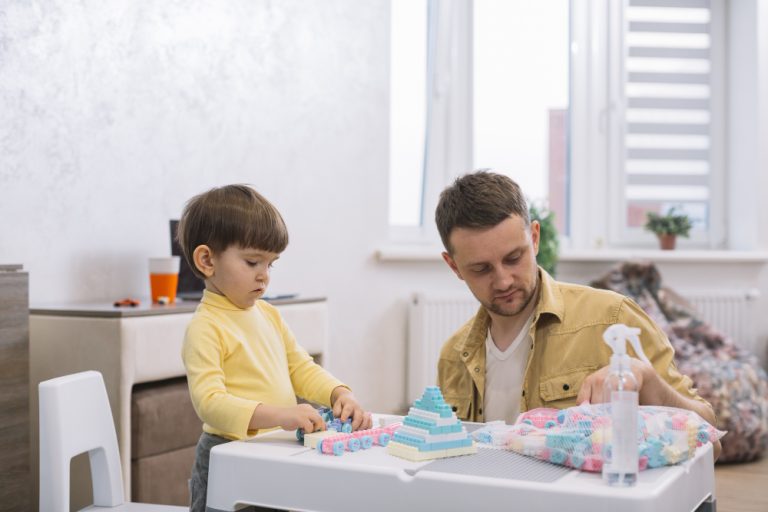What Can A Baby Do That An Adult Cannot? You’ll Be Surprised
Have you ever wondered what can a baby do that an adult cannot? Or have you ever paused to ponder the incredible abilities of babies in general? Just reckon them clutching onto our fingers with an iron grip that catches us off guard. It’s in these moments that we’re reminded of the astounding potential and innate skills of these little beings. It’s truly remarkable!
In a world where it seems like adults have all the power and capability, babies possess unique qualities that we, as grown-ups, often yearn for. From their boundless curiosity to their ability to learn and adapt at lightning speed, babies embody a sense of wonder and resilience that we sometimes lose along the way.
In this blog, “What Can A Baby Do That An Adult Cannot? You’ll Be Surprised,” we’ll delve into the fascinating world of babies and explore the remarkable things they can do that leave us in awe. Join us on this journey as we uncover the hidden gems of babyhood and perhaps rediscover a bit of that childlike wonder within ourselves.
What Can A Baby Do That An Adult Cannot?
- Experience the senses of smell, hearing, touch, taste, and vision all at once
As adults, we cannot fully comprehend the way a newborn perceives the world. To a baby, everything is a unified sensation, much like a salad. Every stimulus they encounter is part of a complete experience, which we call synesthesia. They not only hear a sound, but also see, smell, feel, and taste it.
Due to this intense sensory experience and the novelty of everything around them, babies experience the world more vividly than adults. However, as their brain develops, they begin to take significant leaps in their mental development. After a few such leaps, babies start to perceive the sensual stimuli in a way that is similar to adults.
- Splitting and sucking toes
Did you know that the flexibility of bones decreases as we age? The bones of babies and young children are more flexible and contain more cartilage than bone tissue, making them less prone to fractures. As we grow older, our bones become more rigid and less flexible, making them more susceptible to breaking.
Additionally, flexible bones have a crucial role in maintaining a flexible body. For instance, babies can easily put their big toes in their mouths while lying on their backs, which is a feat that most adults cannot accomplish without significant effort. If you can still do this as an adult, you can rightfully consider yourself a contortionist!
- The Sucking Reflex
Babies are born with various reflexes, including the sucking reflex. This reflex helps babies suck well and with force when stimulated. The stimulus could be anything, even your finger. When you put your finger near their mouth, they will try to suck it just as hard as they would a nipple or bottle teat. However, babies are not easily fooled; they know the difference!
Interestingly, a baby’s sucking action takes place inside their mouth, so it’s not visible to us. They can stretch out the nipple quite far back into their throat using their small and inexperienced mouth, which doesn’t harm the mother. This is a remarkable feat that adults can’t replicate. Babies have a unique way of sucking.
- Babies can make you switch tones
Do you notice that you speak differently when you talk to a baby than when you talk to an adult? You tend to raise your voice, and speak more clearly and louder when talking to a baby. This is a good thing to do, and it happens subconsciously. Studies have shown that this kind of baby talk is more effective in communicating with babies than regular speech. It’s not just humans who use baby talk; monkeys do it too!
Scientists have recently discovered that rhesus monkeys use baby talk to grab baby monkeys’ attention and form a stronger bond with them. They also use facial expressions that go along with the baby talk, much like we do. When we talk, our eyes widen to appear more loving and friendly.
- The Fontanel: Baby’s Moving Skull
The human skull is a single fused mass of bones in adults. However, in babies, there is still an opening between the skull bones known as the fontanel. This means that their skull bones are not yet joined and can move over each other. This is one of Mother Nature’s ways of making childbirth easier. During birth, as the baby’s head passes through the narrow birth canal, the skull bones slide over each other, making the head smaller in diameter.
By the time the baby is between 12 to 18 months old, the fontanel closes, and the skull bones grow together. Until the fontanel closes, the brain beneath it is protected by the firm membranes of the fontanel. However, it’s important to be careful with this spot. Sometimes, you can even see the brain moving and the heart beating through the fontanel.
4 Major Babies’ Developmental Milestones

Babies’ Developmental Milestones are a fascinating journey to behold. Witnessing the incredible growth and progress in a child’s life can truly be awe-inspiring. Let’s delve into some remarkable achievements that babies reach which adults simply cannot replicate:
1. Flexibility and Range of Motion
As babies explore the world around them, their incredible flexibility stands out. From effortlessly putting their toes in their mouth to folding themselves in all sorts of positions while playing, their flexibility is unmatched. Adults, with years of wear and tear on their bodies, cannot match the suppleness and natural range of motion that babies possess.
2. Learning and Absorption
Babies have an exceptional ability to absorb information and learn at an astonishing rate. Their brains are like sponges, soaking up everything from language to motor skills. This rapid pace of learning gradually slows down in adulthood as experiences and prior knowledge shape our perception and understanding of the world.
3. Innocence and Wonder
The purity of a baby’s innocence and wonder is a treasure to behold. They view the world with fresh eyes, marveling at the simplest of things like a butterfly or a new sound. This sense of wonder and curiosity diminishes as we grow older and become desensitized to the everyday magic around us.
4. Growth and Development
The growth spurts and developmental milestones that babies experience in their first few years are truly remarkable. From learning to crawl, walk, and talk, to forming their own unique personalities, babies undergo rapid growth that is unparalleled in adulthood. Witnessing these transformations highlights the resilience and adaptability inherent in young children.
Comparative Analysis of Tasks: What Can A Baby Do That An Adult Cannot?
When it comes to comparing the abilities of babies and adults, there are certain tasks where babies excel and adults might struggle. Let’s delve into some interesting differences:
1. Flexibility and Mobility
Babies are incredibly flexible and have a unique range of motion that adults simply can’t match. They can effortlessly put their toes in their mouth or bend themselves into positions that adults can only dream of.
2. Learning Languages
Babies have an amazing capacity to learn multiple languages effortlessly. Their brains are like sponges, soaking up vocabulary and grammar rules quickly and efficiently. This linguistic talent tends to fade as we grow older.
3. Imitating Sounds and Voices
Babies are exceptional mimics. They can pick up on sounds and tones with precision, often mimicking accents or animal noises with surprising accuracy. Adults, on the other hand, might struggle to replicate these sounds as effortlessly.
4. Exploring Curiosity
Babies are natural explorers, driven by curiosity to touch, taste, and feel everything in their environment. Their sense of wonder and discovery is unmatched, as they approach the world with fresh eyes and unbridled enthusiasm.
5. Sleeping Anywhere and Anytime
Babies have the remarkable ability to fall asleep almost anywhere, anytime. They can nap in noisy environments or bright lights without a problem, whereas most adults require specific conditions to get a good night’s sleep.
6. Healing and Recovery
Babies have a remarkable ability to heal rapidly from injuries, such as cuts and bruises. Their young bodies are resilient and bounce back quickly compared to adults, whose healing process tends to slow down with age.
“Babies are born to be curious, explorative beings with amazing abilities that often leave adults in awe.”
3 Unique Behavioral Patterns: What Can A Baby Do That An Adult Cannot?

Babies exhibit a myriad of behaviors that are fascinating and unique compared to adults. Their actions often leave us in awe, showcasing a different perspective on life. Let’s delve into three distinctive behavioral patterns that babies possess:
1. Enhanced Curiosity and Exploration
Babies are natural explorers, constantly driven by their innate curiosity to understand the world around them. They eagerly investigate objects, textures, and sounds, displaying a keen interest in discovering new experiences. This insatiable curiosity fuels their rapid cognitive development and lays the foundation for future learning.
2. Fearless Sense of Discovery
Unlike adults, babies approach new situations with a fearless sense of wonder and discovery. Unrestricted by preconceived notions or past experiences, they fearlessly welcome novel challenges and adventures. This fearless attitude allows them to fearlessly navigate the unknown, leading to invaluable learning opportunities and personal growth.
3. Pure and Unfiltered Expressions of Emotions
Babies express their emotions in a raw and unfiltered manner, offering a genuine glimpse into their inner world. Whether it’s unbridled laughter, intense cries, or contagious giggles, babies wear their emotions on their sleeves without inhibition. This uninhibited expression of emotions fosters authentic connections with others and cultivates empathy and understanding in their interactions.
Cognitive Abilities in Infants
Babies possess a fascinating array of cognitive abilities that often leave adults astonished. Let’s delve into some key differences in the cognitive realm that set babies apart from adults:
1. Rapid Learning and Absorption
Babies have an incredible capacity for learning and absorbing information at a rapid pace. Their brains are like sponges, soaking up new experiences and stimuli effortlessly. As Dr. Alison Gopnik, a renowned developmental psychologist, aptly puts it, “Babies are natural-born learners, constantly absorbing and making sense of the world around them.”
2. Visual Processing and Pattern Recognition
Infants exhibit remarkable visual processing skills, enabling them to detect patterns and recognize shapes from a very early age. A research by Dr. Scott P. Johnson highlights that babies as young as a few months old show a preference for symmetrical patterns, demonstrating their innate ability to process visual information.
3. Language Acquisition
One of the most striking cognitive abilities of infants is their aptitude for language acquisition. Babies start absorbing the intricacies of language from birth, with studies showing that they can differentiate between different speech sounds within the first few months of life. Dr. Patricia K. Kuhl emphasizes that babies possess a unique sensitivity to phonetic distinctions, laying the foundation for language development.
4. Curiosity and Exploration
Babies are born explorers, driven by an insatiable curiosity about the world around them. Their innate sense of wonder and desire for exploration fuel their cognitive development. As child development expert Dr. Maria Montessori beautifully said, “It is in the moments of exploring, questioning, and discovering that children construct their understanding of the world.”
5. Emotional Intelligence
Infants exhibit a remarkable level of emotional intelligence, showing sensitivity to their caregivers’ emotional cues and responding with empathy. Their ability to tune into emotions and form attachments highlights their advanced emotional cognition from a very early age.
5 Physical Limitations and Advantages of Babies

From a biological perspective, babies possess certain physical abilities that adults lack due to the developmental stage they are in. Here are some interesting insights on what babies can do that adults cannot:
1. Flexible Bones and Limbs
Babies are born with more cartilage and less bone density, making their limbs extremely flexible. This flexibility allows them to move their bodies in ways that adults simply cannot. As adults’ bones ossify and harden over time, this natural flexibility diminishes.
2. Perfect Pitch
Research suggests that infants under the age of one year have the ability to distinguish between different pitches with remarkable accuracy. This capability, known as perfect pitch, is rare in adults and typically develops during infancy.
3. Learning Languages
Babies have a unique ability to effortlessly pick up and learn multiple languages simultaneously. This phenomenon occurs because their brains are highly adaptable during the early developmental stages, making language acquisition more natural and efficient.
4. Soft Skulls and Fontanelles
Infants have soft spots on their heads called fontanelles where the skull bones have not fully fused. This feature facilitates the passage of the baby through the birth canal and allows for rapid brain growth during the first year of life. Adults, on the other hand, have completely fused skull bones.
5. Highly Sensitive Skin
Babies have incredibly sensitive skin, which helps them detect even the slightest changes in their environment. This sensitivity diminishes with age as the skin thickens and loses some of its tactile sensitivity over time.
In conclusion, while adults may have the advantage of strength, experience, and cognitive abilities, babies possess unique physical characteristics that set them apart. Understanding these differences can provide valuable insights into human development and the amazing capabilities of the human body at different stages of life.
“Witnessing a baby’s journey of growth and development is a testament to the incredible potential and capabilities that reside within each of us.”
Social Interactions and Responses
When it comes to social interactions and responses, babies possess unique abilities that often surpass those of adults. Their unfiltered and genuine demeanor in various social situations can be both fascinating and heartwarming.
1. Innate Social Curiosity
Babies exhibit a natural curiosity towards others and their surroundings. Their interest in observing facial expressions, gestures, and tones of voice helps them understand the world around them. This innate social curiosity fosters early social bonding and sets the foundation for future relationships.
2. Authentic Emotional Expressions
Unlike adults who may mask their emotions, babies openly express their feelings without inhibitions. From contagious giggles to heart-melting smiles, babies showcase authentic emotional responses that can uplift the spirits of those around them. Their genuine expressions often evoke empathy and warmth in others.
3. Pure Empathy and Connection
Babies have a remarkable ability to sense and respond to the emotions of those around them. Through simple gestures like reaching out for a hug or offering a comforting touch, babies demonstrate pure empathy and a desire to connect with others on an emotional level. This innate sense of connection forms the basis for building strong emotional bonds.
4. Non-Verbal Communication Skills
While adults rely heavily on verbal communication, babies excel in non-verbal forms of expression. Through eye contact, smiles, babbling, and gestures, babies effectively communicate their needs and emotions. Their non-verbal cues are often instinctively understood by caregivers and facilitate meaningful interactions.
5. Unfiltered Social Responses
Babies respond to social cues in a raw and unfiltered manner, devoid of societal norms or pretense. Their genuine reactions to stimuli reflect their true emotions and perceptions of the world. This authenticity in social responses can be both refreshing and enlightening for adults accustomed to complex social dynamics.
6. Ease in Forming Attachments
One of the most remarkable abilities of babies is their ease in forming attachments with caregivers and loved ones. Through consistent responsiveness, affection, and nurturing interactions, babies develop secure attachments that lay the groundwork for healthy social and emotional development.
“Babies possess a natural charm and authenticity in their social interactions that remind us of the beauty of innocence and genuine connection.” – Unknown
7 Remarkable Adaptive Skills and Functions

Adaptive skills and functions refer to the abilities that individuals develop to navigate and interact with their environment effectively. Babies possess certain innate capabilities that adults may find challenging to replicate due to factors such as physical development, neural plasticity, and societal conditioning. Here are seven remarkable adaptive skills and functions that babies demonstrate:
1. Rapid Learning and Adaptability
Babies have an exceptional capacity for learning and adapting to new situations quickly. Their brains are like sponges, absorbing massive amounts of information from their surroundings at a remarkable pace.
2. Flexibility and Resilience
Babies exhibit a remarkable level of flexibility and resilience in the face of challenges. They can adjust to changes in their environment and bounce back from setbacks with ease, embodying a “try, try again” attitude.
3. Pure Creativity and Curiosity
Babies possess an innate sense of curiosity and creativity, approaching the world with fresh eyes and an unbridled imagination. Their uninhibited exploration leads to novel discoveries and insights.
4. Instinctual Trust and Intuition
Babies have a natural ability to trust their instincts and intuition, relying on their innate senses to navigate the world around them. This unfiltered connection to their inner guidance system often leads to authentic and instinctual decision-making.
5. Authentic Emotional Expression
Babies express their emotions authentically and without filters, demonstrating a pure and unadulterated range of feelings. Their ability to communicate through nonverbal cues is both genuine and powerful.
6. Innate Resilience and Healing
Babies possess a remarkable capacity for resilience and healing, bouncing back from physical and emotional challenges with astounding speed. Their bodies and minds exhibit a natural ability to recover and restore balance.
7. Unconditional Love and Connection
Babies showcase a profound ability to form deep connections and bonds with others, emanating unconditional love and acceptance. Their innate capacity for empathy and connection fosters meaningful relationships from an early age.
“Babies teach us the true essence of resilience, adaptability, and unconditional love. Their innate abilities serve as a reminder of the beauty and magic of life.”
8 Key Milestones in Motor Skills
When it comes to motor skills development, babies achieve remarkable milestones that adults can only dream of replicating. Understanding these developmental stages can shed light on the incredible capabilities of infants. Here are 8 key milestones in a baby’s motor skills journey:
- Grasping Reflex
Babies are born with a natural reflex that allows them to grasp objects placed in their hands. This reflex usually disappears by around 4 to 6 months of age.
- Head Control
Around 2 to 4 months of age, babies start demonstrating improved head control, enabling them to lift their heads while lying on their stomachs.
- Rolling Over
By 5 to 6 months, babies typically master the skill of rolling over from their backs to their stomachs and vice versa, a significant milestone in their physical development.
- Sitting Up Independently
Between 6 to 8 months, babies begin to sit up on their own, showcasing increased strength in their core muscles.
- Crawling
Around 6 to 10 months, babies often start crawling, using their arms and legs to move around independently.
- Pulling to Stand
At approximately 9 to 12 months, many babies develop the ability to pull themselves up to a standing position using nearby furniture for support.
- Cruising
As babies approach their first birthday, they may engage in “cruising,” where they move around while holding onto furniture for balance and support.
- First Steps
A monumental milestone occurs when babies take their first steps, typically between 9 to 12 months of age, signaling a significant advancement in their motor skills development.
These milestones in motor skills showcase the incredible growth and development that babies undergo in a relatively short time frame, underscoring the innate abilities present during the early stages of life.
Babies are truly amazing creatures with their own unique abilities. From their ability to sleep in any position to their incredible flexibility, there’s no denying that babies possess some great skills that adults simply can’t replicate. But as adults, we have our own strengths and abilities that make us just as unique. So let’s celebrate the fantastic skills of both babies and adults and appreciate the differences that make us all unique.
FAQs: What Can A Baby Do That An Adult Cannot?
So, next time you wonder “What Can A Baby Do That An Adult Cannot?” remember that there are many things that babies can do better than us, and that’s perfectly okay. Let’s celebrate their uniqueness and clutch our own as well. If you want to learn more about babies’ remarkable abilities and milestones, keep exploring our blog and share it with others who might be interested.



